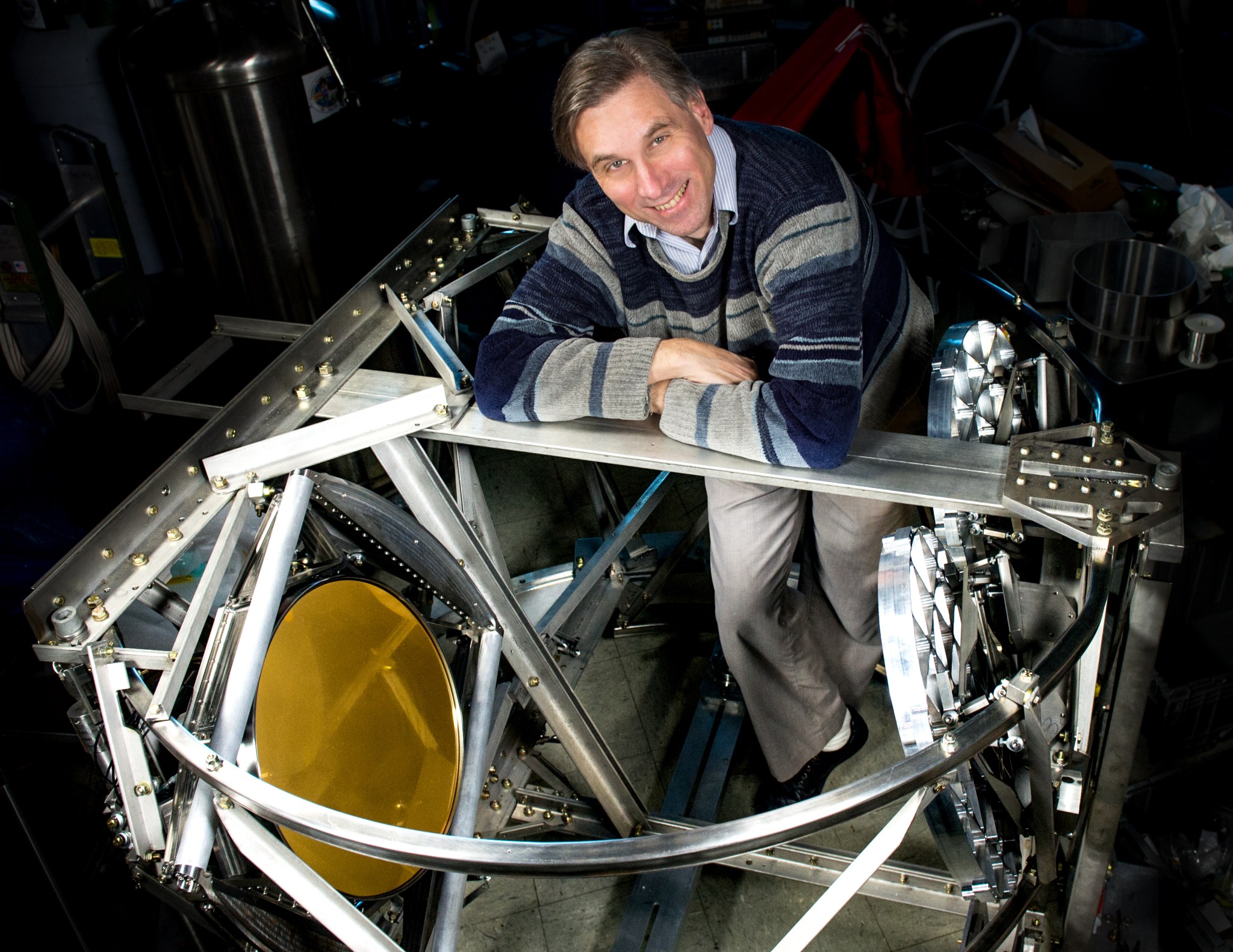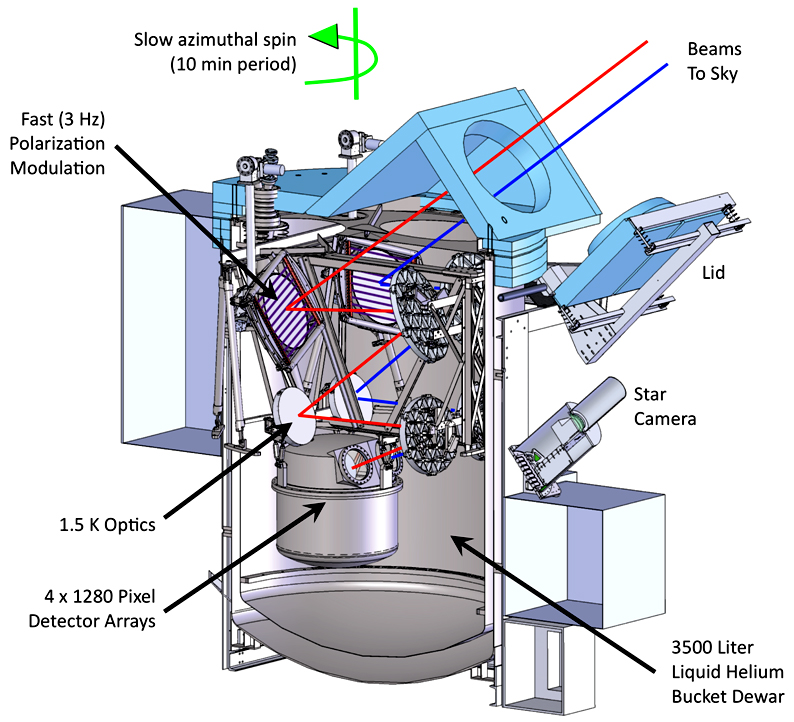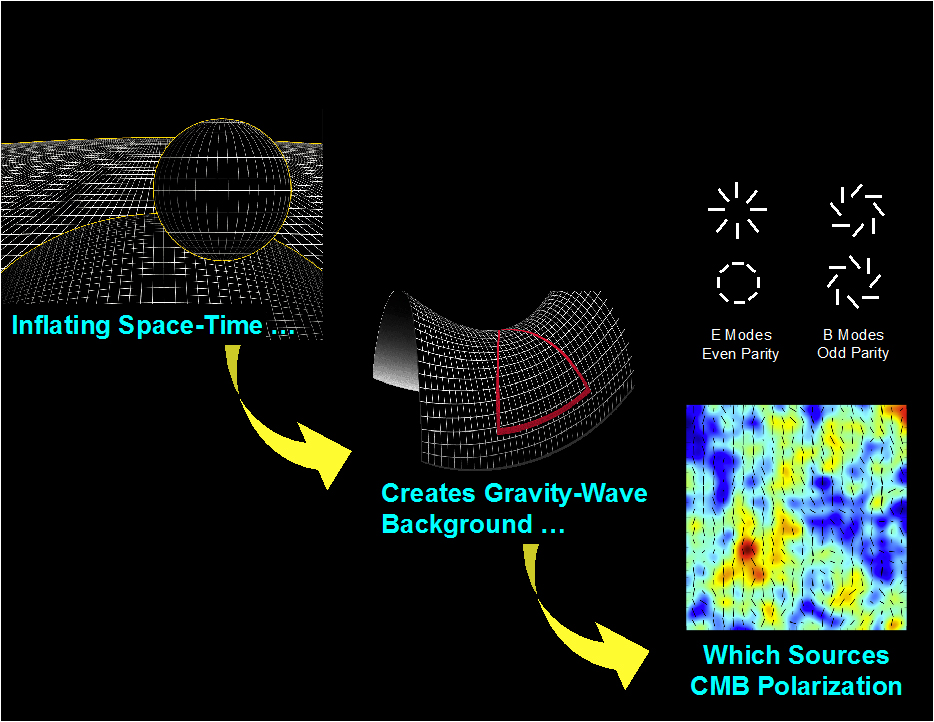Now that scientists have confirmed the existence of gravitational waves, a NASA team is set to search for a predicted signature of primordial gravitational waves that would prove the infant universe expanded far faster than the speed of light and began growing exponentially almost instantaneously after the Big Bang.

Later this year, NASA scientist Al Kogut and his team at the Goddard Space Flight Center in Greenbelt, Maryland, will fly a breakthrough balloon payload — the Primordial Inflation Polarization Explorer, or PIPER — to find evidence of this accelerated expansion, called cosmological inflation.
According to the theory, inflation would have generated gravitational waves, which are tiny perturbations in the fabric of space-time. These waves would have left an imprint in the polarization of the cosmic background radiation, the remnant light from the universe’s creation that bathes the sky in all directions.
Scientific results from two NASA observatories that studied the background radiation revealed tantalizing clues that inflation did, in fact, occur. They found miniscule temperature differences in the afterglow radiation that pointed to density differences that eventually gave rise to the stars and galaxies seen today. The observations also showed that the density differences were remarkably uniform in all directions and that the geometry of the universe was flat — physical characteristics attributable to inflation.
Although other theories also explain these dynamics, they do not explain the existence of primordial gravitational waves created when the universe inflated to astronomical dimensions. Despite repeated attempts, so far no one has discovered these waves or their telltale polarization signature — what cosmologists refer to as B-mode.
Profound Consequences

Should PIPER find the signature proving that the universe inflated from an infinitesimally small point to macroscopic scales within a nano-nano-nano-second of the Big Bang, the discovery would have profound consequences for cosmology and high-energy physics.
While classical physics — such as Albert Einstein’s general theory of relativity — works perfectly for describing gravity on the macroscopic scale (where apples fall to the ground and Earth orbits the sun), it falls apart for calculating outcomes at subatomic, or quantum, scales. In addition to establishing inflation as a physical reality, PIPER’s discovery would give physicists the link between gravity and quantum mechanics.
“If we find it, it will be direct observational proof that gravity obeys quantum mechanics,” Kogut said. “No one has yet worked out a consistent theory of quantum gravity; so observational evidence that gravity does obey quantum mechanics would be a huge development.”
Flight Date Nears
In June, the team plans to conduct a trial run with an engineering test unit with a scientific balloon flight from NASA’s Columbia Scientific Balloon Facility in Palestine, Texas. A follow up mission is scheduled for September with an overnight scientific balloon flight from NASA’s launch site in Fort Sumner, New Mexico, to obtain a view of the Northern Hemisphere. To study the remnant light from the Southern Hemisphere, the team plans to fly PIPER from Alice Springs, Australia; however, a launch has not yet been scheduled.
PIPER ultimately may fly multiple times from the U.S. and Australia, soaring 120,000 feet above Earth where the atmosphere thins into the vacuum of space.
State-of-the-Art Observatory
PIPER is a state-of-the-art, highly sensitive observatory. About the size and weight of van, the observatory is equipped with twin telescopes, Goddard-developed superconducting detectors tuned to far-infrared wavelength bands, and a variable-delay polarization module to cleanly reveal polarized light.
Because the polarization signal is at least 100 times fainter than the temperature signal detected by previous NASA missions, and even colder than the background radiation itself, PIPER must operate under super-cold temperatures to prevent instrument-generated heat from overwhelming the faint signal. As a result, the telescope, including the detectors and polarization modulator, will be placed inside a bucket dewar filled with liquid helium to maintain a frosty -457 degrees Fahrenheit.
Difficult Measurement
Despite its unparalleled sensitivity, PIPER’s mission is a difficult one.

Previous NASA missions identified the E-mode signal, which exhibits a circular or radial arrangement across the sky. Its detection pointed to the time when light from the first stars ionized hydrogen atoms and liberated electrons from protons. The highly sought B-mode, on the other hand, prefers a twisty pattern. Making detection challenging is the fact that different astrophysical phenomena will produce both.
Astronomers have discovered this the hard way. In 2014, astronomers with the Background Imaging of Cosmic Extragalactic Polarization (BICEP2) experiment in the South Pole announced that they had detected the B-mode polarization. However, their euphoria was short-lived. A thorough analysis of data collected by the South Pole’s Keck Array and ESA’s Planck observatory revealed that the signal came instead from dust in the Milky Way.
“BICEP2 didn’t have enough information,” explained Harvey Moseley, a Goddard cosmologist who has collaborated with Kogut in the development of technologies needed to probe the very early universe.
Although BICEP2 had observed a 400-square-degree patch of sky near the Milky Way’s south pole — a region free of much of the dust that fills the star-studded disk — the telescope looked at only one frequency range. It tuned its instrument to 150 GHz, which is favorable for studies of the background radiation. To be truly cosmological in nature, however, the measurement should have been crosschecked at multiple frequencies.
In contrast, PIPER will observe the whole sky at four different frequencies — 200, 270, 350, and 600 GHz — to discriminate between dust and primordial inflation, Kogut said. This assures that the team will be able to remove the dust signal.
Furthermore, PIPER will fly from a high-altitude scientific balloon to avoid emissions from Earth’s atmosphere. If the gravitational waves exist, PIPER will detect their signature to a factor of three fainter than the lowest value predicted by inflationary models, Kogut said. In addition, the telescope will carry out its task 100 times faster than any ground-based observatory.
Good News, Either Way
Even if PIPER fails to detect the signature, the scientific community still would herald the mission a success. “It will be a big deal if they find the signal, but it also will be a big deal if PIPER can’t see it,” Moseley said. “It means that we need to come up with a different model of what happened in the early universe.”
For more information about PIPER, visit: http://sciences.gsfc.nasa.gov/665/research/
NASA’s scientific balloons offer low-cost, near-space access for scientific instruments in the 4,000-pound or more weight class for conducting scientific investigations in fields such as astrophysics, heliophysics and atmospheric research.
NASA’s Wallops Flight Facility, in Virginia, manages the agency’s scientific balloon flight program, with 10 to 15 flights each year from launch sites worldwide. Orbital ATK, which operates the NASA Columbia Scientific Balloon Facility (CSBF), in Palestine, Texas, provides mission planning, engineering services and field operations for NASA’s scientific balloon program. The CSBF team has launched more than 1,700 scientific balloons in the over 35 years of operation.
For more information on the balloon program, visit: https://www.nasa.gov/scientificballoons
Lori Keesey
NASA Goddard Space Flight Center

























